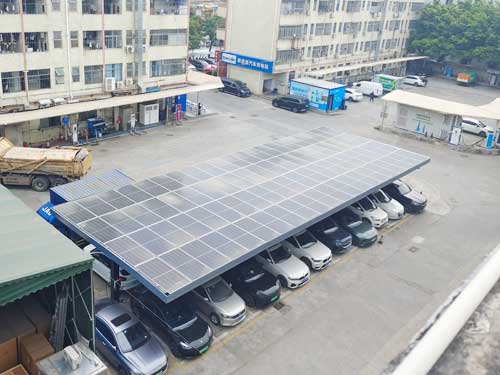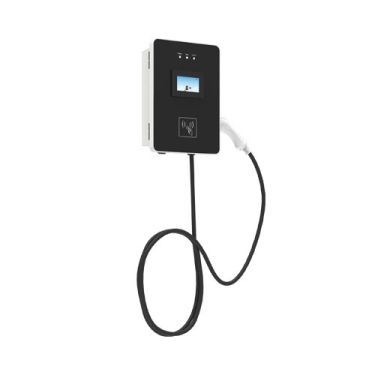- Visitors:0 Views
- Time:2025-04-02
charging infrastructure for evs
Development path and innovative practice of ev charging infrastructure
1. Development status and core pain points
By 2025, the global ev ownership will exceed 250 million, but the charging infrastructure still faces three major contradictions:
1.1. Regional imbalance of supply and demand: The ratio of evs to chargers in first- and second-tier cities is optimized to 3:1, while the ratio of evs to chargers in third- and fourth-tier cities and rural areas remains at a high level of 12:1, and the difference in urban and rural coverage exceeds 50%;
1.2. Insufficient technical compatibility: The public charging charger interface standards cover five protocols including CCS, CHAdeMO, and NACS, resulting in 30% of multinational users encountering equipment adaptation problems;
1.3. The grid load pressure is prominent: The instantaneous power of the supercharger reaches 720kW, and the substations in old urban areas need to invest an additional 30% in transformation costs to match the load demand.
2. Technological innovation and solutions
2.1. Multi-scenario adaptation technology system
2.1.1. Liquid-cooled supercharging network: Adopting full liquid-cooled heat dissipation technology, it can achieve 800A high-current output, single-gun power reaches 720kW, 5 minutes of energy replenishment and 300 kilometers of endurance, and is suitable for high-frequency power replenishment scenarios such as highway service areas;
2.1.2. Photovoltaic storage and charging integration: Through the coordination of photovoltaic roof and energy storage system, the dependence on the power grid is reduced by 40%. The Hongjiali intelligent management platform realizes dynamic power dispatching within the station, and the proportion of energy storage power supply during peak hours is increased to 55%;

2.1.3. Modular flexible deployment: The split charger separates the power cabinet and the terminal for installation, saving 75% of the construction period, which is suitable for historical urban areas and special terrain areas.
2.2. Intelligent operation and maintenance system
2.2.1. Dynamic load forecasting: The AI algorithm integrates weather, holidays and user behavior data with an accuracy rate of over 92%, guiding 45% of charging demand to shift to low-peak periods;
2.2.2. Full life cycle management: Hongjiali's intelligent cloud platform realizes remote monitoring, fault warning and OTA upgrade, reducing the equipment failure rate to below 1.5% and reducing operation and maintenance costs by 30%;
2.2.3. Multi-protocol compatible platform: The unified payment system supports NFC, cross-border settlement and carbon emission data docking, and the user-side APP access rate reaches 85% .
2.3. Solutions for special scenarios
2.3.1. Energy supply for heavy trucks: DC chargers above 400kW are equipped with V2G technology to meet the two-way power supply needs of mines, ports and other scenarios, and the average daily service vehicles of a single pile are increased to 18 vehicles;
2.3.2. Polar environment equipment: Cold-resistant materials and battery preheating technology ensure normal operation in a -40℃ environment, and the availability rate of charging stations in the Arctic Circle exceeds 99%;
2.3.3. Mobile emergency network: Charging vehicles equipped with energy storage systems can provide 72 hours of emergency power supply in disaster scenarios, covering a radius of 50 kilometers.
3. Policy coordination and ecological construction
3.1. Standard system construction: New piles are required to be compatible with 4 international interfaces, and the equipment life cycle is increased to more than 10 years. Products of Hongjiali and other companies have obtained TUV/ETL international certification;
3.2. Investment incentive mechanism: The EU "Green Infrastructure Fund" provides a 25% construction subsidy, and integrated photovoltaic storage and charging projects enjoy a 10-year electricity price discount;
3.3. Business model innovation: Highway service areas adopt a "charging + retail + leisure" composite format, which extends the user's stay time by 40% and increases the annual revenue of a single station by 35%.
The ev Charging infrastructure needs to build a three-in-one development model of "technology iteration + intelligent management + ecological coordination". Hongjiali Enterprise has provided technical support for solving the imbalance between supply and demand and improving energy efficiency through solutions such as liquid cooling supercharging, photovoltaic storage and charging coordination, and intelligent platforms. It is estimated that by 2030, the total number of chargers in the world will exceed 120 million, and the ratio of evs to chargers will be optimized to 2:1, fully supporting the realization of carbon neutrality goals in the transportation field.
Recommended Reading
- Privacy Policy2023-12-09
Privacy PolicyThis privacy pol
- Countdown - 2 days丨2024 European Smart Energy Exhi...2024-06-17
Tomorrow is near, and the future is here! There ar...
- Notice on the 2025 New Year's Day Holiday2024-12-31
According to the provisions of national statutory ...
- what powers electric car charging stations2024-07-11
The power source of electric v
- Are Electric Cars Really Zero Emissions Vehicles?2023-05-26
Are Electric Cars Really Zero
- norway ev charging stations2025-03-31
Construction and innovative practice of Norway'...
- electric car charging units2023-11-27
An electric car charging units
- ev charging explained2025-03-18
With the popularity of electric vehicles, charging...
- type of ev chargers2024-09-10
There are various types of ev
Hot Products
-
240v ev charging station
AC level 2 EV charging products that meet the standards in N...
Get last price
-
ev fleet charging
Operate your electric fleet with confide
Get last price
-
30 kw dc charger
30 kw dc chargerBrand: HongjialiRated po
Get last price
-
120kw ev charger
Hongjiali New Energy Co., Ltd. provides
Get last price



